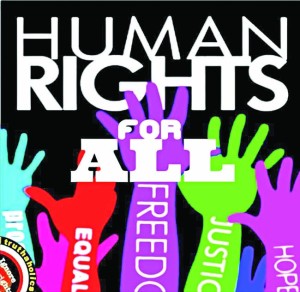The Power of the Human-Rights Movement
February 1, 2016 · By ARYEH NEIER for www.project-syndicate.org

NEW YORK – Most of those who devote themselves to safeguarding human rights worldwide would agree that this is a very bad time for our movement. The evidence is all around us.
Today, the number of people who have been forcibly displaced by war and severe repression is higher than at any time since World War II. Yet resistance to the resettlement of refugees is rising sharply, owing largely to fears stirred by terrorist attacks in many countries. Indeed, now, in the name of enhancing security, many governments are violating fundamental human rights.
Support Project Syndicate’s mission
Governments in China, Egypt, Ethiopia, India, Israel, and Russia are taking – or seriously considering – steps that will hobble civil society by restricting the funding available to nongovernmental organizations. China has been cracking down on human-rights lawyers. In Eastern Europe, from Hungary to Poland, illiberal nationalism is on the rise. Even the mature democracies of Western Europe and the United States have seen a surge in public support for political figures espousing nationalist and xenophobic doctrines.
Has the trend toward greater international protection of human rights, which began four decades ago, come to an end?
Answering that question requires considering how the trend got underway in the first place. In 1975, 35 European and North American countries signed the Helsinki Final Act, which paved the way for cooperation between Eastern and Western Europe. Among the guiding principles that the Act established for relations among participating states was “respect for human rights and fundamental freedoms, including the freedom of thought, conscience, religion, or belief.”
After Helsinki, human-rights movements began to gain traction in repressive communist countries – starting with the Soviet Union itself – as they pressed their governments to comply with the commitments that had been made. Many organizations that promote human rights internationally, including Human Rights Watch, also got their start around this time.
The 1970s marked a turning point for the role of human rights in US foreign policy as well. Congress enacted a series of laws – sometimes over President Gerald Ford’s veto – prohibiting the US from offering aid to governments that violated internationally recognized human rights, even if those governments were firm Cold War allies. Moreover, the State Department was required to publish detailed annual human-rights reports on every member of the United Nations, a practice that continues today.
Despite these promising steps, global prospects for promoting human rights seemed even bleaker then than they do today. The Soviet Union, under Leonid Brezhnev, seemed likely to maintain imperial control over the countries of Eastern Europe indefinitely. China was in the final stages of the brutal Cultural Revolution. Much of Latin America and parts of Asia – including Indonesia, Pakistan, the Philippines, and South Korea – were ruled by military dictatorships that tortured and “disappeared” thousands of their citizens.
In Vietnam, where the US killed at least a million people before leaving in 1975, a hardline communist regime had secured control. Neighboring Cambodia was subjected to the genocidal rule of the Khmer Rouge. Even democratic India was placed under emergency rule from 1975 to 1977, and nonviolent critics of government policies were imprisoned.
In South Africa, the apartheid system was firmly in place. There was hardly a glimmer of respect for human rights elsewhere in Africa or in the Middle East, where US allies Turkey and Iran routinely engaged in torture.
Over the next decade and a half, however, prospects for reform brightened dramatically. Communism collapsed in Eastern Europe; military dictatorships gave way to democracy in Latin America and parts of Asia; and Nelson Mandela’s release from prison signaled the impending end of apartheid in South Africa. The international human-rights movement played a significant part in all of these developments.
But there were serious setbacks. Probably the most damaging were the establishment of a theocracy in Iran in 1979, and the massacre at Tiananmen Square a decade later in China. The fact that China’s repressive practices have not significantly impeded its rise to global superpower status has sent a dangerous message to other authoritarian regimes seeking to benefit economically from globalization without adhering to international human-rights standards.
If the international human-rights movement is to continue making headway, it must reinforce the importance of judging governments on the basis of their behavior, ensuring that rights violations cause serious damage to countries’ reputation and credibility. China, with its huge economic clout, has managed to get away with a lot; but its attempts to suppress those who draw attention to its human-right violations show that even it is not immune to such pressure.
Protecting human rights has always been an uphill struggle. But the human-rights movement has proved that, no matter how difficult the circumstances, it is not helpless. It may not wield the power of the sword or the power of the purse. But, with a bold and creative approach, it can help to ensure that when governments violate human rights – including by attacking the people defending those rights – they pay a meaningful international price.






